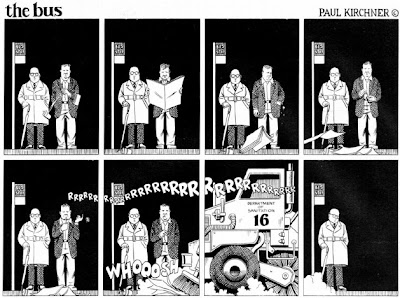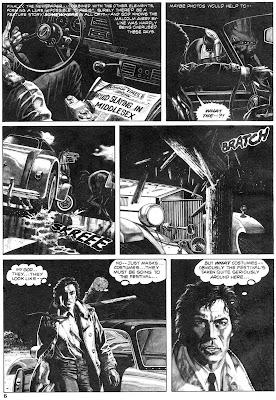'Sex, American Style' (248 pp) was published in 1997 by Feral House. It's a large trade paperback, with a format in which copious black and white illustrations occupy the sidebars, and text, the center of the page.
If you grew up in the period from 1968 - 1980, like I did, then this book is a bizarre, but entertaining, trip back in time....to the era when everyone was focused on maintaining their body hair, not removing it.
When there was no internet, no AIDS, no Xanax, and the idea of buying jeans with holes already in them utterly incomprehensible.
Hedonism and self-absorption were the proper attitudes to take in the face of a battered economy, gas shortages, widespread unemployment, and plenty of existential anomie.
Boulware divides the book into chapters dealing with various aspects of American culture. He leads off with movies, both Hollywood productions and hardcore (back in 1971, in order to see porn movies, you actually had to visit an adult theatre).
The next series of chapters explore 70s 'excess' in music....
...literature......
......television.....
.....'how to' manuals........
....consumer products.....
....and the 'swinger' culture....
The verdict ? Having a copy of 'Sex, American Style' is an absolute requirement for anyone who grew up in the interval from 1968 - 1980.



















































































